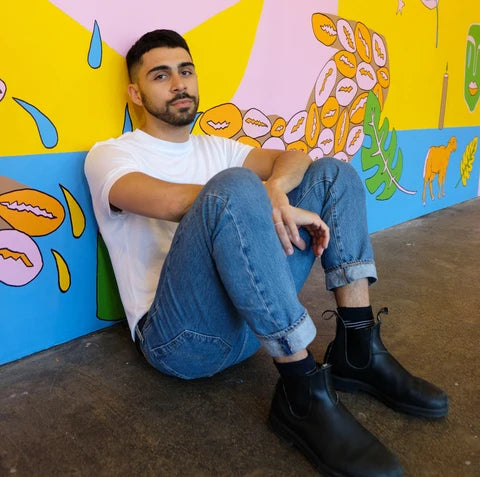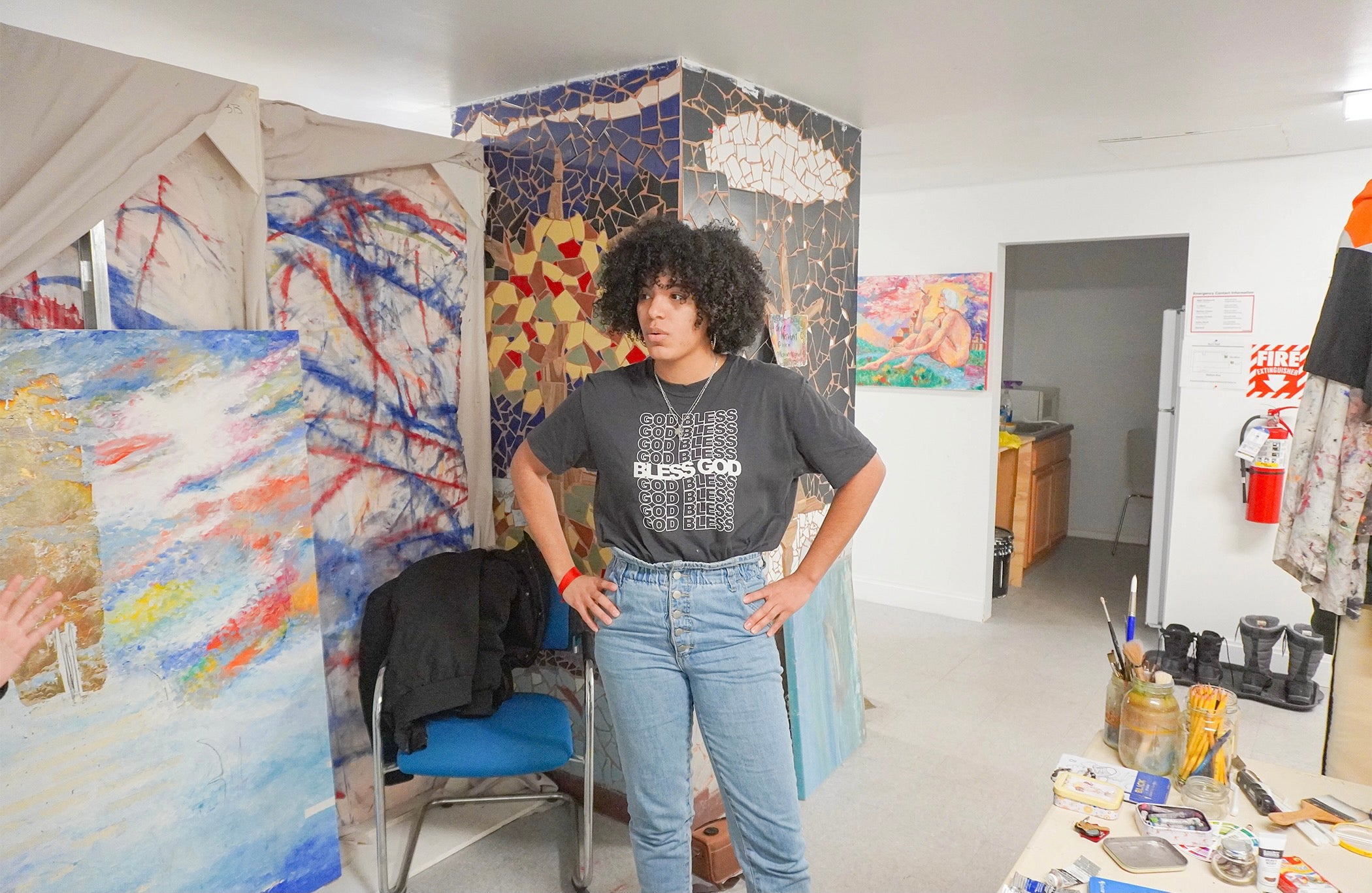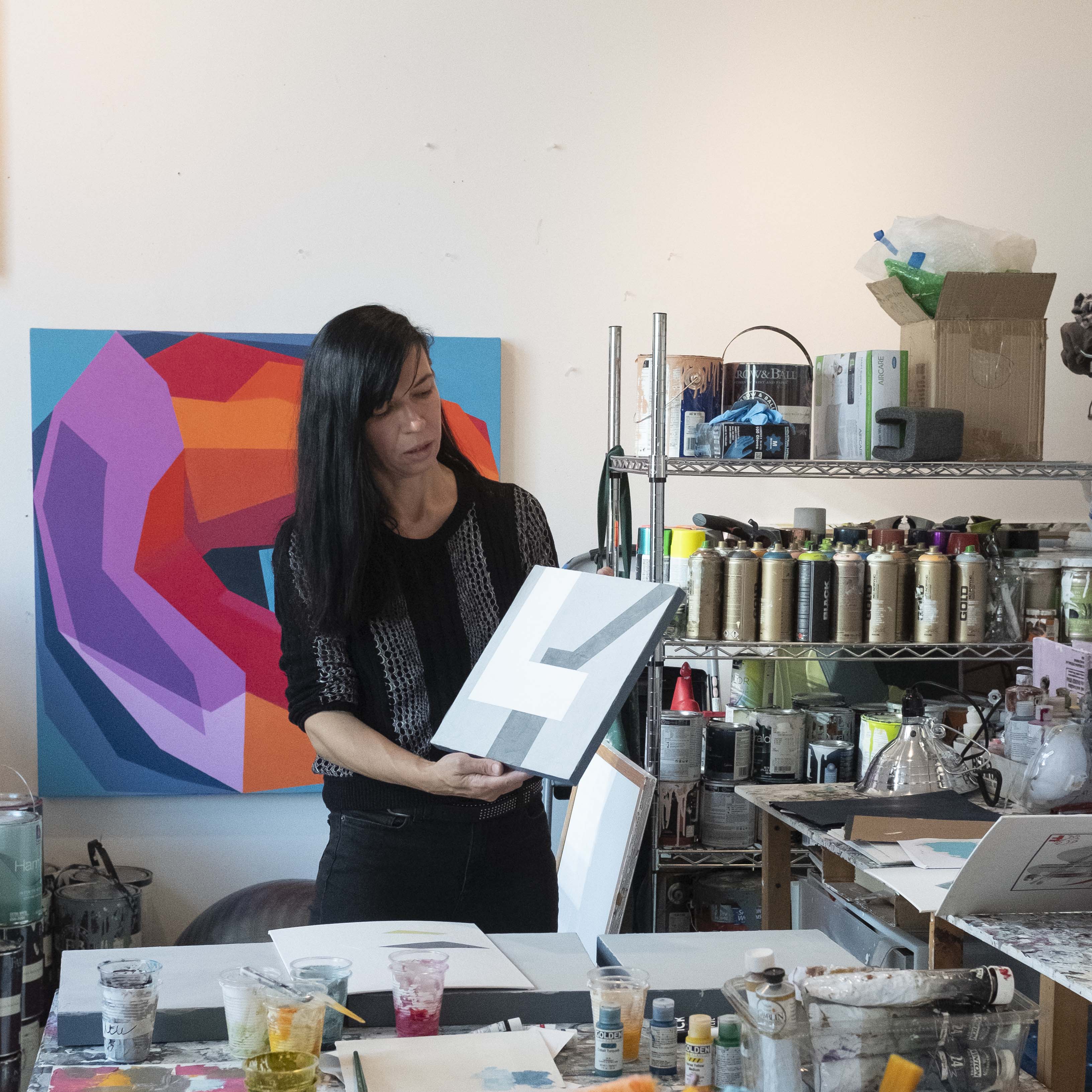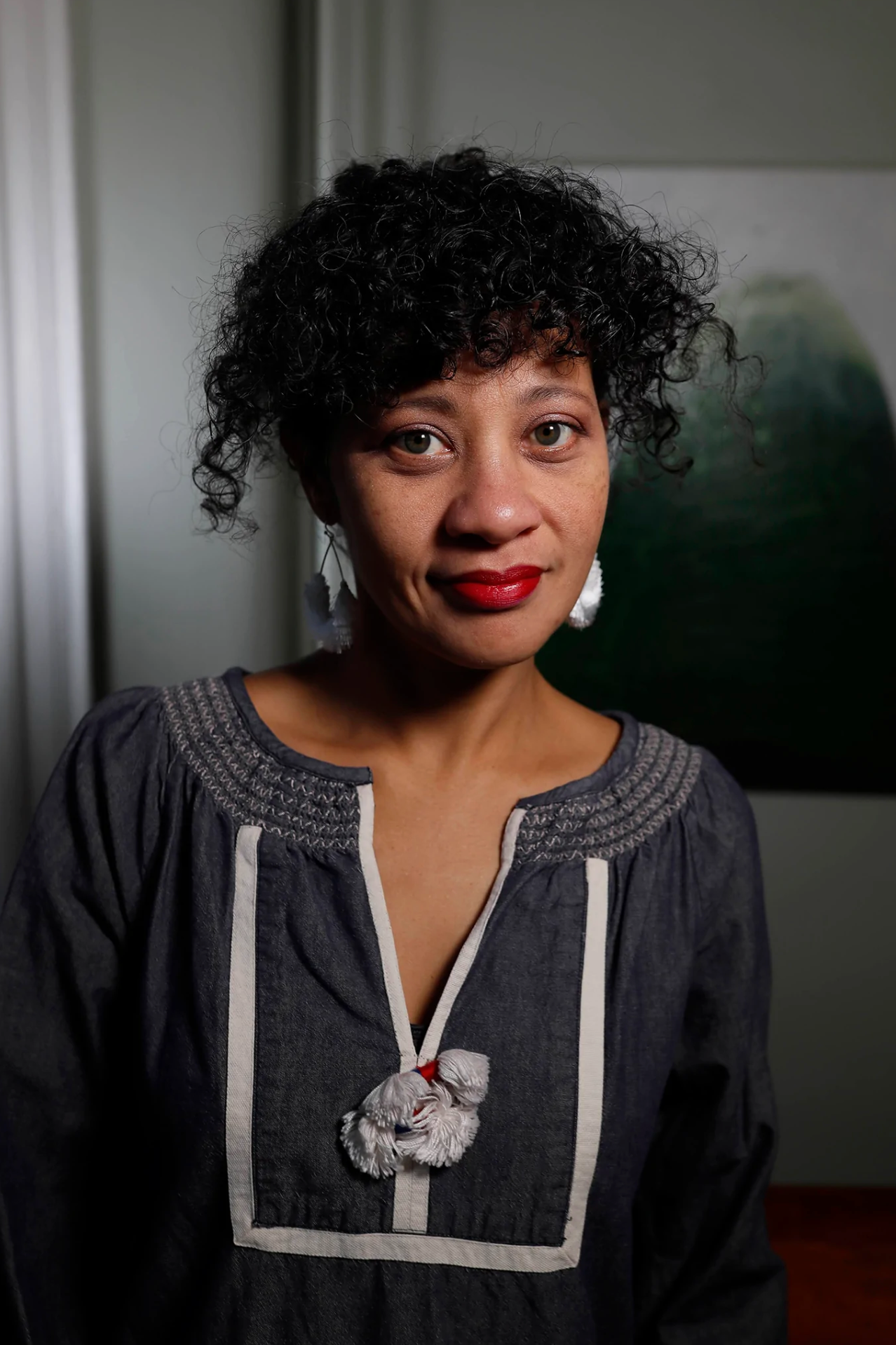No Products in the Cart
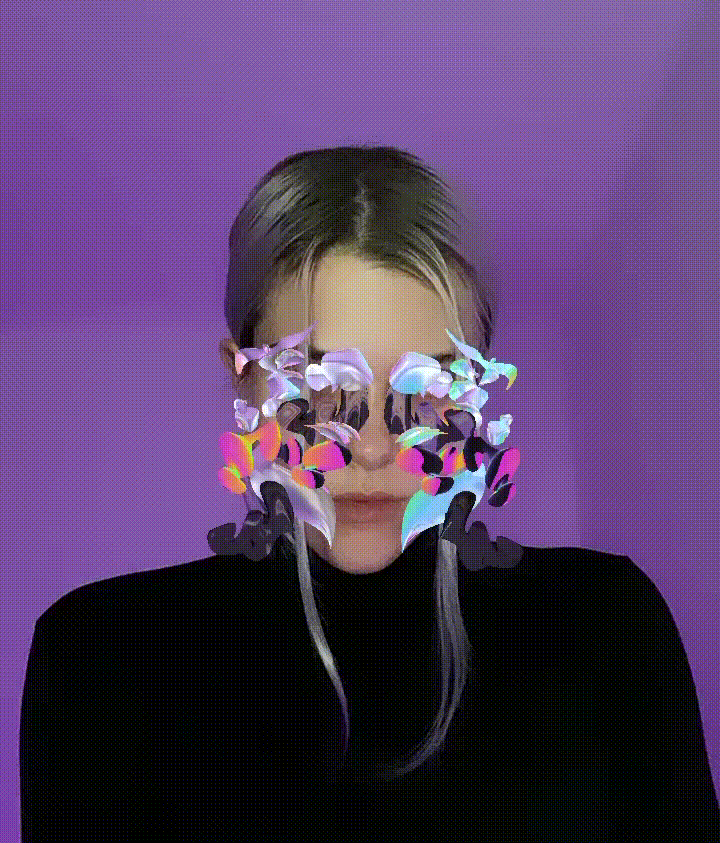

Follow Kat Vlasova on her website / Instagram / Soundcloud
"I’m interested in a lot of things but primarily in emerging tech to create new and beautiful experiences for people."


Hannah: What’s the difference between VR, AR, and interactive computing?
Kat: VR (Virtual Reality) is a complete visual and auditory immersion in a virtual environment, with no traces of the place you’re physically in.
AR (Augmented Reality) consist of virtual objects overlaid on top of your actual physical audible + visible environment.
In the way I define it, Interactive Computing is a broad range of human-computer interactions. Gaming is a great example of this - it takes user input and changes the content. So I wouldn’t consider a webpage interactive computing unless you choose something and whatever you see in front of you changes accordingly.
Reality in the Virtual Age
H: I laughed so hard when your VR piece, Lurida, said “Congratulations, you sold your first work for $5”.
K: Whatever I make on XR, the goal will always be to create soothing, funny, wonder, curiosity, and other positive emotions. There’s enough outrage and anger in the world already that I feel hopeless consuming. There’s enough people talking about serious things. My work is based on problems I’m dealing with, but in a way of coping with it.

(Left) Pressure Sensor Synthesizer Necklace Prototype / (Right) Haptic glove
H: Do your multi-sensory pieces - the synthesizer necklace and haptic gloves - relate to your goal of creating something consoling?
K: Definitely. I crave physical connections with people.
When I moved to the U.S as a kid, I was very shy and really missed having a bigger community around me (back in Russia). Making friends was hard, adjusting to language was hard, so I turned to art, and later the Internet as a coping mechanism. Social media and the judgment we pose on others can sometimes make the anxiety and depression worse - so recently I’ve been motivated to create something that makes me feel more connected to other people and my own body. I always liked the sense of touch too, I was the kid who wanted to touch everything at galleries.

"VR Meeting" skit from TV show Portlandia, in which people get immediately distracted playing around with their avatars.
H: I do think one thing people miss most about art events is just the feeling of being around people. And the little rituals like wine at gallery openings. What kind of collective rituals do you see develop around XR?
K: There's still struggle, unless it’s a location-based experience like Pokemon Go where everyone would walk around looking for items and occasionally bump into each other.
Geotracking or image markers spread throughout different locations might be the way to go for AR experiences.
For VR, there are new, more affordable headsets and alt spaces that let people see their friends in a virtual space, like VRChat or Mozilla Hubs. While in school, I interned for a startup that developed software that allows you to share VR experience by seeing avatar presentations of the other person while the two of you are in the same physical room. Their goal was to capture live audience engagement in theater, so we could still see our peer’s responses while watching a performance in VR.

American gothic? Truly gothic.
H: How is XR art meant to be enjoyed? I’ve seen radically different examples, from VR with high-investment installations to AR filters on Instagram.
K: Pretty much the only way to consume VR content is through VR headsets, which you either need to own yourself or go to a gallery exhibit for. This definitely limits the accessibility. Not everyone has a headset or can go to a gallery, not everyone lives in an area that has access to those kinds of exhibitions. However, the new Oculus Quest pricing is definitely going to increase the number of VR users.
I moved towards cellphone-based AR because there’s a much larger audience. What I’m thinking of all the time is “how can more people see it?”, and right now, social media offers the broadest audience.
Idea and Practice
H: Producing VR projects with a story like your Alien Invasion, does it affect you differently from making similar sequences using a real set and actors? Has VR changed the way you think about what's possible or meaningful?
K: Theater can be more emotionally rewarding because you’re not burdened by the weight of the headset, and because you can see the audience’s reaction. VR producers are also finding new ways of capturing the emotional affect in storytelling.
The process of producing theater in VR is different from live productions. In live theater, you have to get location, the actors, makeup...and overall a larger team. VR has less need for physical spaces and equipment, and also can defy the laws of physics. It Can also personalize the experience based on user input. For instance, you could read users’ pulse and create the color of the environment based on it.
H: Have you experienced any disjunctions between the “aesthetic” of the digital and using it as a practical method to execute projects?
K: I feel like I’m constantly behind, that I can’t make something that fits the vision of what I want it to be in my head.
I got into XR two years ago and I’m not a 3D modeler or computer scientist by training. There’s so many factors that go into the kind of intricate experiences I want to create: user interaction, sound design, set design…that people spend their entire careers focusing on. So if you’re a singular person trying to create a cohesive feeling, it’s a steep learning curve.
 Interactive Media Arts program at NYU Tisch.
Interactive Media Arts program at NYU Tisch.
H: How does one learn or teach something still new as Interactive Media Arts?
K: Most of school was me googling stuff. No, really! I was the first graduating class of this program, along with four other girls.
The lessons consisted mostly of learning about new media of artists and technologies. But a lot of learning how to actually use the tech was self researched because many packages for VR development, etc software are changing constantly. Oftentimes even professors would not fully know the newest update.
As a result, I have a broad but shallow knowledge of different fields: live visual performance, live coding, physical computing, and so on. It opened up my eyes to so many different things, and I had a hard time picking one field since I’m a person who wants to do everything rather than one medium.
Although upon graduating, I realized there are not a lot of entry level jobs for people who want to do Everything I learned about. Especially during this pandemic.
 Multimedia installation Sedimenting Skin by Bahareh Khoshooee (2018) at Elsewhere
Multimedia installation Sedimenting Skin by Bahareh Khoshooee (2018) at Elsewhere
H: So under normal circumstances, what would you have wanted to do?
K: I was excited to go into the live events field, because I wanted to work in large-scale installations at brand pop-ups or music festivals - the kind a lot of people can experience together in person compared to the limited individual scope of games. I always loved Elsewhere; new spaces like Artechhouse and Zerospace too. A lot of luxury brands are now more interested in immersive experiences.
Not all rainbows
H: With AI, there’s been a lot of controversy over it reinforcing social biases - facial recognition failing at much higher rates for Black women, for example. Have you had moments of awareness in your field?
K: Any technology definitely reflects biases of the people who make them, and a lot of the companies who make equipment and platforms are still led by cis white men. People get easily excited about technology but sometimes don’t have an outside perspective of who actually gets to experience the final product.
One example of this that I noticed as a docent at VR exhibits is that the headsets do not take into account different people’s hair. I was helping a Black woman with a beautiful big hairstyle put on the headset, but the straps weren’t designed to be comfortable for her and fit without messing up the style. There’s now independent Black designers trying to fix this flaw, but if more Black women were consulted in the original headset design we wouldn’t be dealing with this problem.
 A controversial snapchat filter.
A controversial snapchat filter.
It also comes up with using AI to approve filters for social media. There are certain guidelines to keep the community safe, from vulgar imagery, for example. But on Instagram there were approved filters created by white people that were then called out by non-white communities for cultural appropriation. The best way out, I think, is to user-test on a more diverse population and listen to their feedback.
Accessibility for developers who speak different languages is also an issue. The tech company may be in the United States and use English as the language of documentation, but promote its software to creators all around the world. Yet the documentation, which is vital in learning how to develop something, is just not available in their language.
Then of course, there’s the cost of everything. I’m lucky to have gone to a school with a lot of equipment like VR headsets, 3D scanners, motion trackers, laser cutters...which not every public university has, and I could only get access to this equipment through my major. I would not be in this field had it not been for my major.
H: In a larger sense of how tech affects our lives then - do you have any insights on how we can be more conscious consumers on social media?
K: We saw how unhealthy social media can be with the spread of misinformation during the 2016 elections, where platforms pushed false information to people unknowingly through their algorithms. Now the implication of people being miseducated is huge - especially when following false medical information about COVID-19.
I think it’s important to take a moment to breathe and step back when you read something reactionary, instead of choosing a side or venting to contribute to the cacophony. We’re trained to be reactive and to engage, which drives ad revenues. So remind yourself that you can assert your own independence by not reacting, that your immediate surroundings and neighbors are still your priority. If you find something that sparks your interest, try to find more information about it from credible sources.
I found myself consuming headlines and constantly engaging with the newsfeed, and am trying to pry myself away from it. It’s also easy to go into a cycle of self-hatred on social media seeing artwork being posted by people thinking “I’ll never get to this level” - when what I’m not seeing is that they’re ten years older than me and are in a completely different ballpark.

H: What excites you right now?
K: I’m in the middle of How To Do Nothing by Jenny Odell. It’s about the attention economy and how to escape it. Of course, it’s pretty impractical for us as Gen Z to completely separate ourselves from social media because so much of our livelihood, especially in the creative field, is tied to it. And with COVID, the only networking I do is through Twitter or Instagram. It’s the mental response you have to the content and how much you spend that you can control.
Tik Tok is great, and also terrifying! It’s so addictive...the algorithm is spot on. I have to practice a lot of self restraint because it really hones in on your interest and keeps feeding you content.
I’ve also started slowly getting into gaming. I play things that are peaceful and cutesy, like Animal Crossing. Even as a simulated experience, it’s so soothing to have social experiences - there are studies about it too. I cried when the villagers in my Animal Crossing village threw me a birthday party.
All work images from artist Kat Vlasova.



